(单词翻译:单击)
How dumplings are eaten in different countries
原来“歪果饺子”长这样,来看各国千奇百怪的dumplings
Zhang noticed that many people's ears were frostbitten when he returned to his hometown one winter. He decided to wrap mutton, chilli and some warming medicinal herbs in dough skin. Folding them into the shape of an ear, he boiled them in water before giving them to the poor.
有一年冬天,张仲景回乡时发现很多人的耳朵都冻伤了。他决定用面皮包上羊肉、胡椒和一些温补的草药,把它们折成耳朵的形状,在水里煮熟,然后送给穷人。
This food was originally called "Jiao'er" for its shape, and later the name slowly became Jiaozi.
最初因其形似耳朵而被称为“娇耳”,后来慢慢变成了饺子。
Celery stuffing represents industriousness and (resulting) wealth. 芹菜(Celery) sounds like 'industrious wealth' (勤财). Leek stuffing represents long-term wealth. 'Leek' (韭菜) sounds like 'industrious wealth' (久财).
芹菜馅代表着勤劳和财富,因为芹菜听起来像“勤财”。韭菜馅代表富贵永久,因为韭菜听起来像“久财”。
Cabbage stuffing represents the blessing for a well-off life for a hundred years. 白菜(Cabbage) sounds like 'hundred wealth' (百财).
白菜馅代表了生活幸福长久的祝福。白菜听起来像“百财”。
Fish stuffing means surplus wealth. Reason: 'Fish' (鱼) sounds the same as 'surplus' (余). Eating fish dumplings means wishing you have a lot of remaining money.
鱼肉馅的饺子意味着财富盈余。因为鱼与“余”同音。吃鱼肉饺子意味着财富多多的祝福。
Empanada
西班牙:
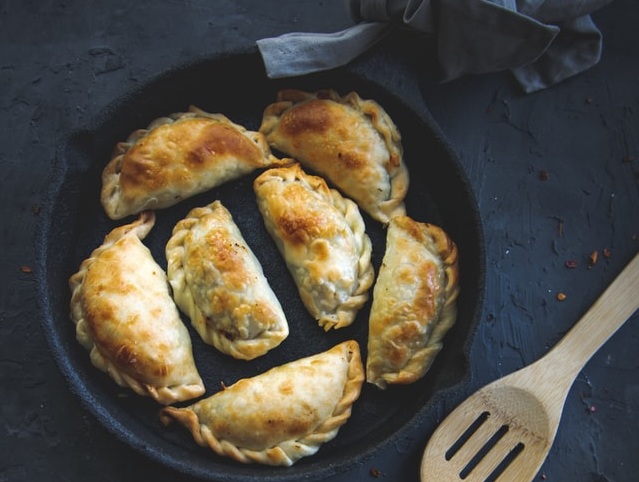
Empanada is Spanish for "wrapped in bread," a fitting name for this fried Argentinian dumpling. Bite through the flakey crust and you'll commonly find a filling of ground beef, hard boiled eggs, olives, onions, paprika, and cumin. But they also come in plenty of other varieties.
Empanada在西班牙语中是“包裹在面包里”的意思,这个名字对这种油炸饺子来说非常形象。咬开松软的外皮,你会发现里面包裹着碎牛肉、水煮蛋、橄榄、洋葱、辣椒粉和小茴香等馅料。但也有很多其他种类的Empanada。
Samosa
印度:(咖喱角)
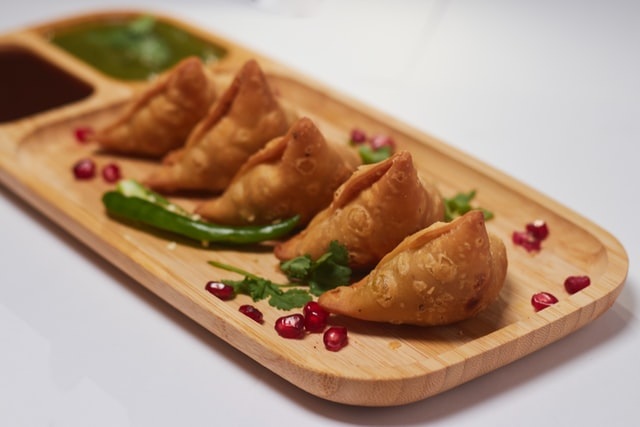
Samosa are Indian dumplings that have a crispy, flaky, pastry-like shell, but are filled with spiced potatoes and peas, lentils, ground meat, or onions.
咖喱角是一种印度饺子,它外皮薄而酥脆,类似糕点,但里面包裹着加了香料的土豆和豌豆、扁豆、肉末或洋葱。
Gyoza
日本:(日式煎饺)
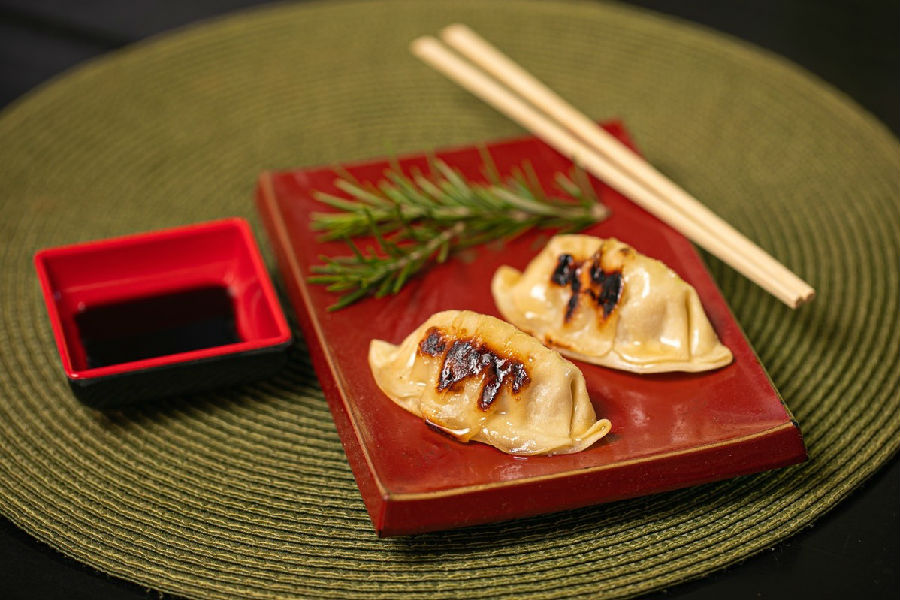
These pan fried dumplings, known as gyoza, are the Japanese version of potstickers. They're stuffed with pork, cabbage, onion, and carrots, all of which are wrapped in a thin browned dough.
日本煎饺gyoza就是一种日式锅贴。日式煎饺的馅里有猪肉、卷心菜、洋葱和胡萝卜,这些馅料被包裹在焦黄的薄面皮里。
Knödel
德国:
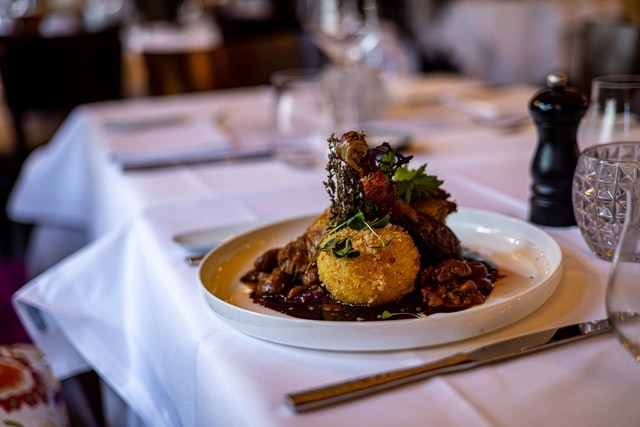
Traditional German dumplings — knödel or klöße— are not filled with anything, but instead paired with German meats such as schnitzel, sauerbraten, or rouladen.
传统德国饺子knödel(或klöß)没有任何馅料,而是与炸肉排、醋烩牛肉或牛肉卷等德式肉食搭配。
Pelmeni
塞尔维亚:
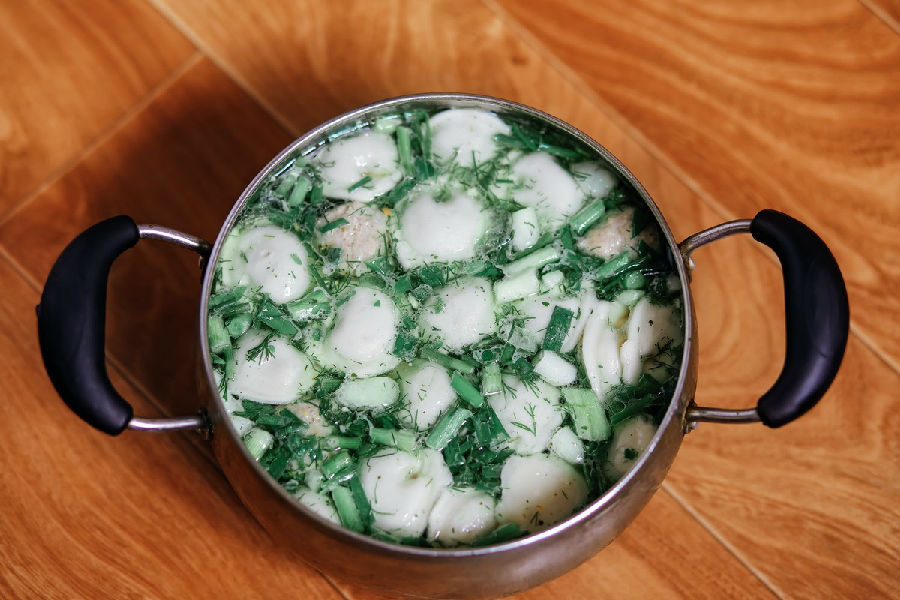
Pelmeni originally come from Serbia, but are found all over Russia. The dumplings are stuffed with meat such as turkey or pork, mushrooms, or cheese.
Pelmeni起源于塞尔维亚,但在俄罗斯各地都有。这种饺子里是火鸡、猪肉、蘑菇或奶酪等馅料。
banh bot loc
越南:(水晶虾饺)
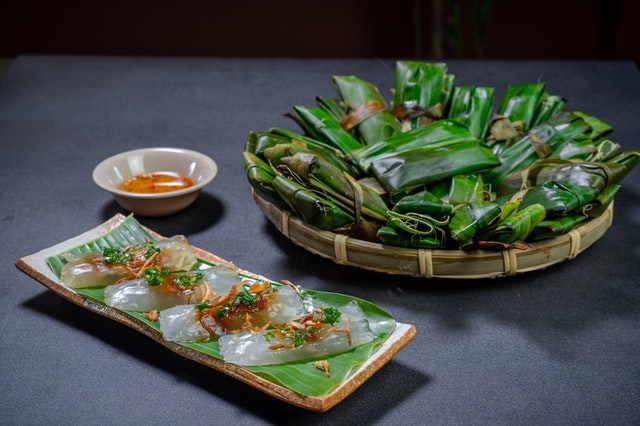
Banh bot loc are Vietnamese dumplings made from tapioca flour, which develops a chewy texture when cooked. The dumplings are stuffed with pork and shrimp.
Banh bot loc是由木薯粉制成的越南饺子,烹煮后很有嚼劲,里面包裹着猪肉和虾。
Modak
印度:
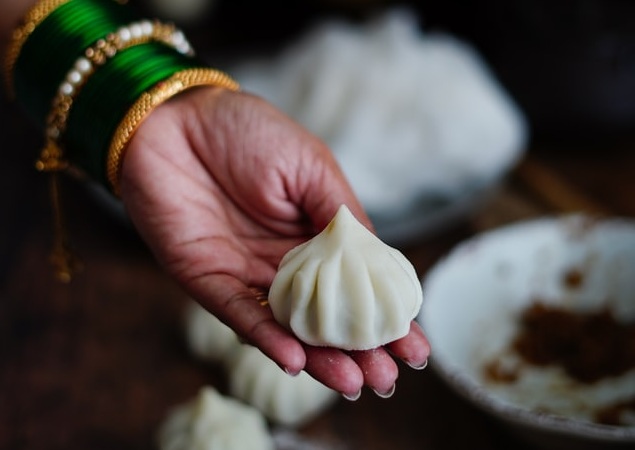
Modak are sweet dumplings served in the Indian state of Maharashtra for the Ganesh festival. The dough is made from rice flour and the dumplings are stuffed with coconut and an unrefined whole cane sugar known as jaggery.
Modak是印度马哈拉施特拉邦在象头神节食用的甜味饺子。Modak的面团由米粉制成,馅料里有椰蓉和粗糖(一种未精制蔗糖)。
Italy: Gnocchi
(意大利团子)
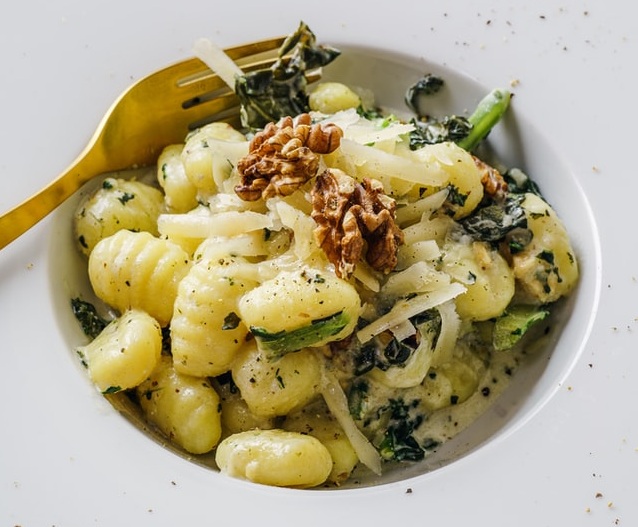
Not surprisingly, the Italians managed to turn their dumpling into a popular pasta dish: gnocchi. These mini dumplings are pure potatoes that have been cooked and are then served bathed in sauce with some type of meat or vegetable.
意大利人能将他们的“饺子”做成一种受欢迎的意面——意大利团子,这一点也不意外。这些小饺子其实是煮熟的土豆,淋上酱汁,与一些肉和蔬菜一起食用。
来源:Insider
编辑:董静
本文转载自中国日报网,如有侵权,请联系我们删除。


